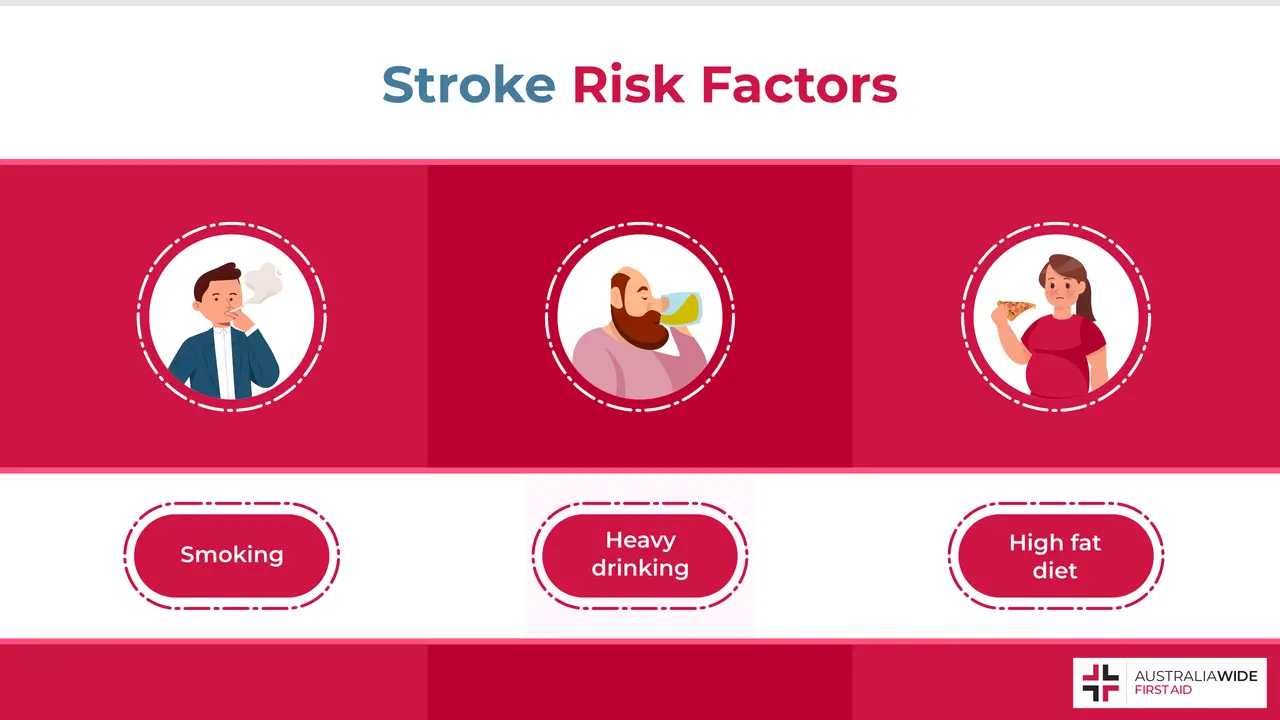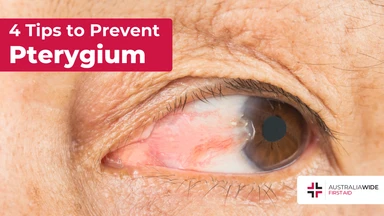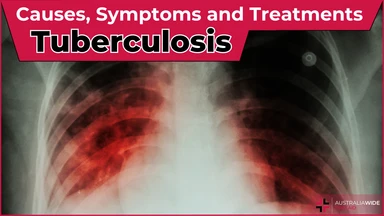Are You at Risk of a Stroke?


A stroke occurs when the blood supply to a part of the brain is suddenly disrupted.
Brain cells rely on blood to receive oxygen and vital nutrients, including glucose.
As such, when their blood supply is diminished, they can begin to die.
The longer a stroke patient goes without emergency treatment, the greater their risk of permanent brain damage and ongoing physical, emotional, and intellectual complications.
Many of the major risk factors of stroke can be avoided – we are going to look at these today so that you can take proactive measures to safeguard your wellbeing.
Strokes can occur in three primary forms: haemorrhagic, ischaemic, and transient ischaemic attack (TIA).
Haemorrhagic strokes occur when a blood vessel ruptures and causes bleeding inside the brain, or in the space surrounding the brain.
This influx of blood exerts significant pressure on the soft brain tissue while simultaneously depriving it of oxygen and nutrients, which can cause it to become swollen, inflamed, and damaged.
Ischaemic stroke, meanwhile, occurs when there is a block in an artery that supplies blood to a part of the brain.
This blockage can be caused by atherosclerosis, the progressive thickening of an artery’s walls, or by an embolism, a blood clot or other bodily substance that can become stuck in a blood vessel.
If the blockage is not cleared within a few hours, entire parts of the brain can become scarred and cease to function permanently.
Finally, TIAs occur when the brain’s blood supply is only temporarily blocked.
While TIAs typically do not cause brain damage, they indicate that the casualty could experience a full stroke in the near future and should likewise receive prompt medical treatment, per the Stroke Foundation.
Both haemorrhagic and ischaemic strokes share two major risk factors: high blood pressure and atherosclerosis.
According to Better Health Channel, “blood pressure is the pressure of the blood in the arteries as it is pumped around the body by the heart”.
Normal blood pressure is around 120/80, while high blood pressure is over 140/90 – consistently high blood pressure is a medical condition known as hypertension.
When a person is experiencing hypertension, their blood is exerting significant force on the walls of their blood vessels, which can weaken them, damage them, and make them more prone to ruptures, as in haemorrhagic strokes.
Hypertension can also increase one’s risk of ischaemic stroke, as fats collect in damaged arteries when they enter the blood stream.
Likewise, hypertension can ‘hose off’ this collected debris and cause it to circulate in, and potentially block, blood vessels in the brain.
Atherosclerosis is a medical condition wherein fats, cholesterol, and other substances build up in the inner lining of an artery to form plaque.
This build-up of plaque can block blood flow completely, as in ischaemic strokes.
It can also cause the arteries to become stiff.
Arteries are composed of smooth muscle that is sufficiently flexible to constrict, dilate, and thereby push blood around the parasympathetic nervous system.
As such, when they become stiff, they can cause clots, as in ischaemic strokes, or rupture, as in haemorrhagic strokes.
Three main causes of hypertension and atherosclerosis are: smoking, heavy drinking, and diets rich in fat and sugar.
The products found in tobacco smoke can increase a person’s risk of stroke in a variety of ways.
For instance, smoking can increase the levels of LDL cholesterol, ‘bad cholesterol’, in the blood, and make it more prone to sticking to artery walls.
At the same time, smoking can reduce the levels of HDL cholesterol, ‘good cholesterol’, in the blood, the purpose of which is to absorb cholesterol and carry it back to the liver for excretion.
The chemicals in smoke can also cause platelets, a type of blood cell, to stick together and form clots.
Nicotine, in particular, has been known to narrow blood vessels and make the heart beat faster, both of which work together to raise blood pressure.
As with smoking, alcohol contains numerous products that can increase a person’s risk of stroke.
For instance, alcohol can increase the levels of renin in a person’s blood.
Renin is an enzyme secreted by the kidneys that decreases the diameter of blood vessels and the amount of fluid excreted as urine, both of which can lead to high blood pressure.
Excessive alcohol consumption can also chronically inflame the pancreas, impair its ability to secrete insulin for the breakdown of glucose, and thereby lead to diabetes.
Diabetes is a chronic condition in which there is too much glucose (sugar) in the blood steam; high blood sugar levels, in turn, can alter vascular tissue and accelerate the process of atherosclerosis.
Indulging in an unhealthy diet can also drastically increase a person’s risk of stroke.
According to the National Health Service (NHS), obesity is generally caused by a sedentary lifestyle coupled with high-fat and high-sugar diets.
Obesity, in turn, can increase a person’s risk of developing Type 2 diabetes, as it can trigger ‘pro-inflammatory’ chemicals in fat calls, which disrupts the function of insulin responsive cells and makes the body less sensitive to insulin.
A stroke is a medical emergency in which the blood supply to a part of the brain is suddenly disrupted.
Without blood and the oxygen and nutrients therein, brain cells can begin to die and leave the casualty with ongoing physical, emotional, and intellectual complications.
Hypertension and atherosclerosis are two major risk factors for stroke, both of which can be caused or worsened by smoking, heavy drinking, and diets rich in fat and sugar.
It is important to take note of these preventable risk factors, so you can make the necessary lifestyle changes to safeguard your wellbeing.
To learn more about the risk factors and signs of stroke, check out the National Stroke Foundation and their annual awareness campaigns, including National Stroke Week. And to learn more about how to identify, treat, and prevent the symptoms of stroke, book a first aid course with us today.

May 1, 2025
Pterygium, also known as surfer's eye, is an ocular surface disease characterised by a growth of limbal and conjunctival tissue over the cornea. Fortunately, you can practice many eye health habits to help prevent the development of pterygium and other risks.

April 3, 2025
Tuberculosis is a severe bacterial infection that mainly affects the lungs and other parts of the body, including the nervous system. This contagious disease can quickly spread in crowded areas when an infected person coughs, talks, or sneezes.

February 13, 2025
Melioidosis is a bacterial infection caused by Burkholderia pseudomallei, a microorganism found in soil and water. This infection is often underdiagnosed due to symptoms mimicking many other illnesses. As such, awareness is critical for those living or working in affected regions.